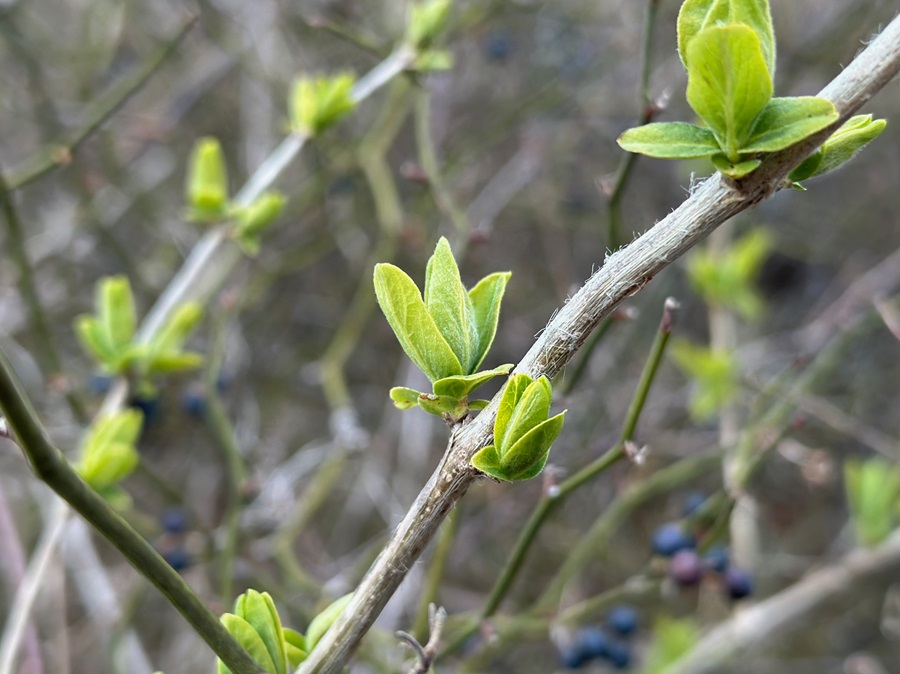
The deciduous flora of the Cape has just barely begun to awaken and flower — most native trees and shrubs are still hitting snooze — and leaves aren’t on the agenda at least till they’ve had their coffee. That makes the greening limbs of Lonicera morrowii, an Asiatic bush honeysuckle, a conspicuous sight, like the ones pictured here on the paved trail at Head of the Meadow Beach in Truro.
Leafing out while the rest of the understory is still asleep, Morrow’s honeysuckle outcompetes native spring ephemerals for sunlight, then later has its seeds dispersed far and wide by birds — a cedar waxwing can gorge itself on the tempting red berries to a point that its tail feathers go from yellow to orange. Clipping this invasive at the base spurs regrowth, so stopping it means revisiting the stump every so often to snip new shoots.
There are other invasive honeysuckles on the Cape. Morrow’s honeysuckle is identifiable by the soft hairs on the undersides of its leaves and white and yellow blooms, while Tatarian honeysuckle, a close look-alike, has hairless leaves and pink blooms. Both have hollow stems; the piths of native honeysuckles are solid.



